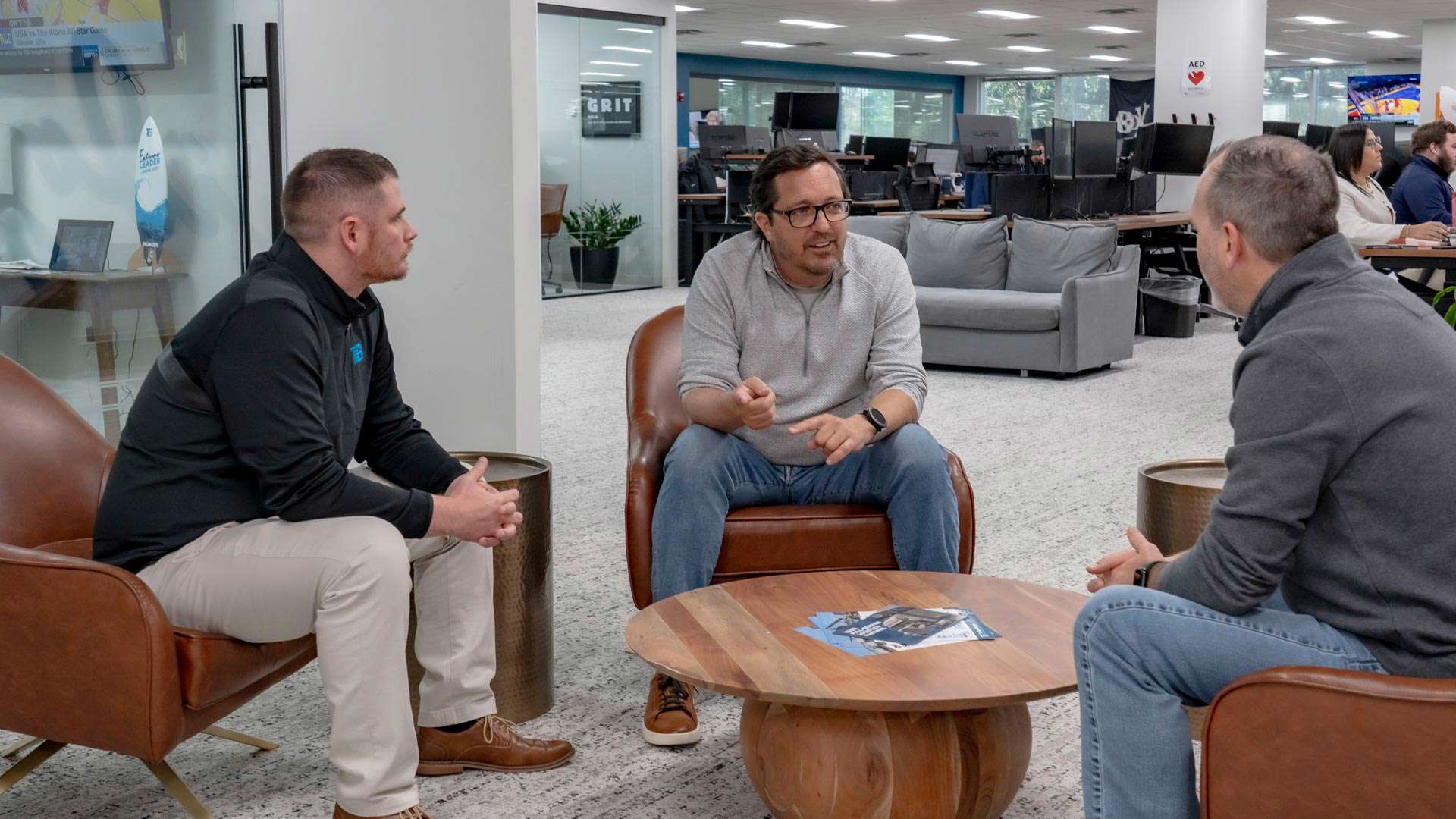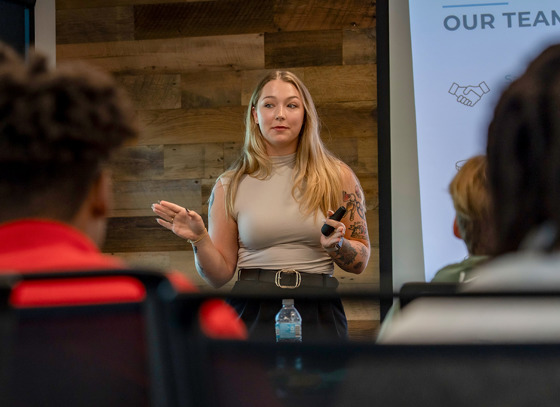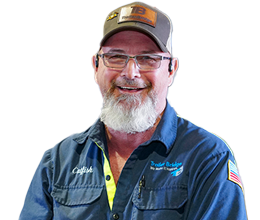
Trailer Bridge’s Golden Rule for Supply Chain Workforce Stability: Love
Supply chain leaders wrestle with paradoxes. You’re pushed to digitize faster and squeeze more out of lean teams, yet your long-term competitiveness still hinges on people who feel connected, coached and committed. That tension sits at the heart of Trailer Bridge’s workforce strategy, and it’s why CEO Mitch Luciano is taking a unique message to this fall’s Women in Supply Chain (WISC) Forum: Love belongs at work.
“If you take care of your people, they take care of your clients and your business,” he says. “You have to love the people you work with and find connection as a leader.”
The company’s approach is pragmatic, not sentimental. It includes disciplined hiring, staged onboarding, structured mentoring and tech adoption with a heavy-dose of change management. For executives charged with operational resilience, digital transformation and talent risk, it’s a blueprint worth studying—and one Luciano will explore at WISC’s “Partners in Progress” panel this November 18–20, 2025, in Clearwater, Florida.
Trailer Bridge Results
9.9%, compared to industry’s 21.9% (2025)
37% vs. 23.5% industry (2024)
3.6% vs. 4.2% industry (2023)
11%+ of TB’s Workforce has been here 10+ years outpacing industry norms (11.2% vs 10.4%)
Trailer Bridge intentionally changes tacks. New hires ease in, starting midweek, observe and shadow after that, then ramp up with targeted reinforcement going forward. Training is thoughtfully phased – sometimes focusing on software programs first, customer interactions or other role-specific experiences next allowing for targeted reinforcement and long-term retention. People learn by doing, without the cognitive overload that drives early exits. This softer, staged approach lingers long after week two. Leaders are expected to know their people personally, keep conversations going, and as the organization scales, accommodate natural development.
“My job is to know people on a personal level,” Luciano says. “Leaders who separate themselves out of fear miss opportunities.”
Behavioral Data for Balanced, Skills-Based Hiring
Trailer Bridge assesses every candidate before hiring using a tool called Predictive Index (PI), a system for role fitting, team composition and managerial coaching. VP of Employee Services, Kacy Swanson, explains the intent.
“The system quickly measures natural behavioral drives, places people where they can thrive, uses team-level views to spot interactions, gaps and communication dynamics,” she says. “We use manager tools and coaching guides to help leaders hire and coach employees for optimal satisfaction and performance.”
One example of PI in action occurred at one of Trailer Bridge’s logistics branches, which heavily skewed toward administrative strengths: excellent at tactically complex work but light on assertive, growth-oriented profiles. Meanwhile, another location leaned the other way: strong on new business, thin on account continuity.
By plotting PI profiles, leaders could see the structural imbalance and target hiring to shore up the missing pieces in each market. The outcome improved hiring, as well as coaching.
“When a manager understands the behavioral ‘why’ behind performance, course corrections can be fast, respectful and effective,” Swanson said.
For an industry wrestling with skills gaps and generational differences, a common language for talent decisions is a force multiplier.
Mentorship with Teeth: Building Bridges on a Quarterly Basis
Trailer Bridge’s internal mentoring program, Building Bridges, is now in its second year and tuned for scale without bureaucracy. Leaders host small groups of three to five employees for four sessions each quarter on topics including career development, executive presence and emotional intelligence. Employees opt in, rank interests and rotate to foster relationships outside normal organizational lines. In this way, the program builds intimacy and outcomes through improved visibility and cross-departmental ties, leading to more internal promotions.
“Choice and flexibility keep the program authentic,” Swanson says. “When people choose to be there, engagement follows.”
Luciano adds “the cultural benefit—time with leaders and peers you wouldn’t otherwise meet—matters as much as the skills content conveyed. It’s a big reason why we have a dedicated and productive workforce today.”
Tech Up without Losing the Human Touch
Luciano is the first to say technology may book more freight and optimize workflows, but he’s also blunt about its limits. “Technology cannot replace the value of sitting next to each other, hearing how work is completed and learning in real-time,” he says. “Remote work may enable flexibility, but when overused it erodes culture, onboarding quality and even revenue.”
According to Luciano, the operating model is “both/and.” That is, invest in systems, but invest in change management. Communicate the “why,” involve frontline employees, hold monthly Q&As, and don’t just roll out and walk away. Where fear of replacement surfaces, tackle it directly. “AI and automation are tools to elevate people, not erase them,” he says.
Diversity as Practice, Not Posture
This year’s WISC Forum features a first-ever all-male panel, “Partners in Progress,” focused on how men and women work together to advance women’s leadership. Luciano calls the invite an honor and a chance to model broad-based acceptance in a male-dominated sector while recognizing Trailer Bridge’s own progress.
Context matters here. The company’s workforce is already more diverse than industry averages, and its development programs are built to meet various needs across gender and generation. For executives debating how to balance perception and outcomes, the message is this: invite more voices to the table, do the operational work (i.e., hiring practices, mentoring cycles, benefits tuning, etc.) and make inclusion stick.
What To Do Next
Luciano’s counsel to fellow leaders is disarmingly modest, yet operationally demanding:
- Start small: Recognition and feedback change behavior faster than slogans.
- Give it time: Development is a three- to four-year commitment, not a quarterly sprint.
- Work the problem in front of you: Look around. Are people being developed where you work? Be the hardest worker in the room, and be patient.
Those steps sound simple until you apply them at scale. They require manager enablement, metrics, rewards, coaching and a leadership posture that puts people before process. That’s what gives the “love at work” idea legs. It’s less a sentiment than an operating principle: hire for fit, design for growth, manage for trust.
Connect with Trailer Bridge this Fall in Florida
If you’re heading to Clearwater this November, consider “Partners in Progress” a working session. Explore how you might adapt staged onboarding for your frontline roles. Plot your team’s behavioral mix and see what’s missing. Audit a transformation program for the human side of adoption. And when the “Partners in Progress” panel begins, be there to learn how culture is a performance system, and love—yes, love—is one of its most effective levers.






